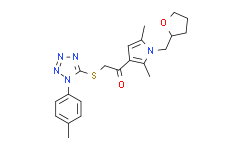HIFs (Hypoxia-inducible factors) are transcription factors that react to variations in the amount of oxygen available to cells, more specifically, to reductions in oxygen, or hypoxia. The effects of hypoxia, a condition of low oxygen concentration, on the cell are mediated by the HIF signaling cascade. Oftentimes, hypoxia prevents cells from differentiating. However, hypoxia encourages the growth of blood vessels and is crucial for the development of a vascular system in both cancer tumors and embryos.Additionally, the hypoxia in wounds encourages keratinocyte migration and epithelium repair. HIFs are essential to development in general. HIF-1 gene deletion in mammals causes perinatal death. It has been demonstrated that HIF-1 is essential for chondrocyte survival and enables the cells to adapt to low oxygen environments in the growth plates of bones. Human metabolism is controlled in large part by HIF. A number of medications that function as selective HIF prolyl hydroxylase inhibitors have recently been created.
| Structure | Cat No. | Product Name | CAS No. | Product Description |
|---|---|---|---|---|

|
V87504 | Molidustat sodium | 1375799-59-9 | Molidustat sodium is an orally active hypoxia-inducible factor prolyl hydroxylase (HIF-PH) inhibitor with IC50 values of 480 nM, 280 nM, and 450 nM for PHD1, PHD2, and PHD3, respectively. |

|
V87506 | O-Carboranylphenoxyacetanilide | 2260545-92-2 | O-Carboranylphenoxyacetanilide is a HIF-1α inhibitor that inhibits HIF-1α activation. |

|
V102617 | Octyl-α-ketoglutarate | 876150-14-0 | Octyl-α-ketoglutarate (1-octyl-2-oxoglutarate) is a stable, cell-permeable α-ketoglutarate that rapidly accumulates in cells with tricarboxylic acid (TCA) cycle dysfunction and stimulates prolyl hydroxylase (PHD) activity. |

|
V51642 | OHM-1 | 1450995-09-1 | OHM1 is an analog of HIF1α CTAD and inhibits its binding to p300/CBP. |

|
V51622 | Oltipraz-d3 | 2012598-51-3 | Oltipraz-d3 is a labeled substitute for Oltipraz. |

|
V73835 | PHD-IN-1 | 2924182-31-8 | PHD-IN-1 (compound 80) is a potent PHD2 inhibitor (antagonist) with IC50 ≤5 nM. |

|
V73836 | PHD-IN-2 | 2924182-42-1 | PHD-IN-2 (Compound 91) is a PHD antagonist (IC50= <5 nM). |

|
V84840 | PHD-IN-3 | 2924181-77-9 | |

|
V73837 | PHD2-IN-1 | 2768219-28-7 | PHD2-IN-1 is a potent, orally bioactive HIF-prolyl hydroxylase 2 (PHD2) inhibitor (antagonist) with IC50 of 22.53 nM for anemia research. |

|
V87500 | PHD2-IN-2 | PHD2-IN-2 (Compound 12) is a PHD2 inhibitor with IC50 of 34.3 nM. | |

|
V84812 | PRLX-93936 dihydrochloride | 1094210-96-4 | |

|
V104413 | PROTAC HIF-1α degrader-1 | PROTAC HIF-1α Degrader-1 (Compound V2) is a potent hypoxia-inducible factor-1α (HIF-1α) PROTAC degrader with an IC50 value of 7.54 µM. | |

|
V4090 | PT-2385 | 1672665-49-4 | PT2385 (PT-2385) is a nove, potent, selective and orally bioactive inhibitor of hypoxia inducible factor (HIF-2α) with anticancer and anti-hepatic steatosis activity. |

|
V51623 | TAT-cyclo-CLLFVY | 1446322-66-2 | TAT-cyclo-CLLFVY is a HIF-1 heterodimeric cyclic peptide conjugate that can inhibit regulatory hypoxia signaling activation. |

|
V81522 | TAT-cyclo-CLLFVY TFA | TAT-cyclo-CLLFVY TFA is a cyclic peptide inhibitor of HIF-1 heterodimerization that can inhibit hypoxia signaling in cancer cells. | |

|
V88914 | Teleocidin B-4 | 11032-05-6 | Teleocidin B-4 is a PKC activator. |

|
V51621 | TRC-160334 | 1293289-69-6 | TRC160334 is a hypoxia-inducible factor (HIF) hydroxylase inhibitor. |

|
V94259 | TRC160334 sodium | 1293290-41-1 | TRC160334 sodium is a hypoxia-inducible factor (HIF) hydroxylase inhibitor. |

|
V51624 | Verucopeptin | 138067-14-8 | Verucopeptin is a potent activator of HIF-1 (IC50=0.22 μM) and can reduce the expression of HIF-1 target genes and the expression level of HIF-1α. |

|
V51004 | WAY-325641 | 869354-47-2 | HIV-1 integrase inhibitor |